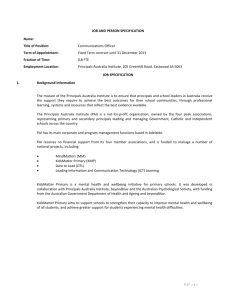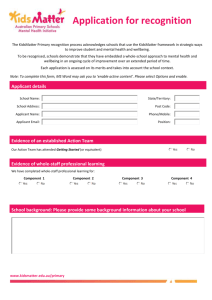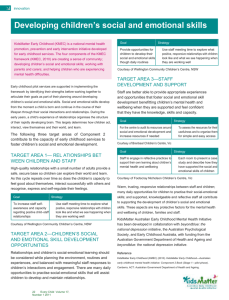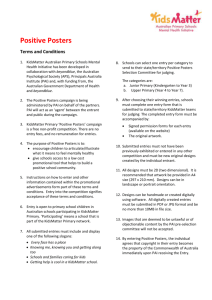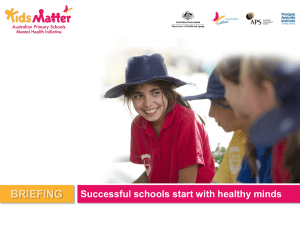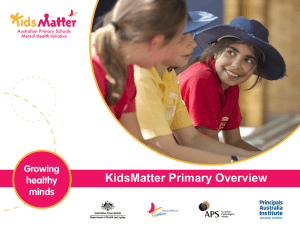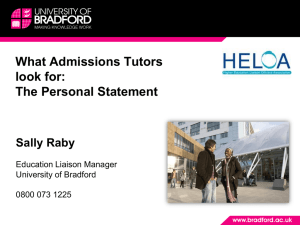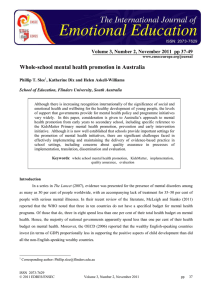The webinar slides are also available in PDF
advertisement
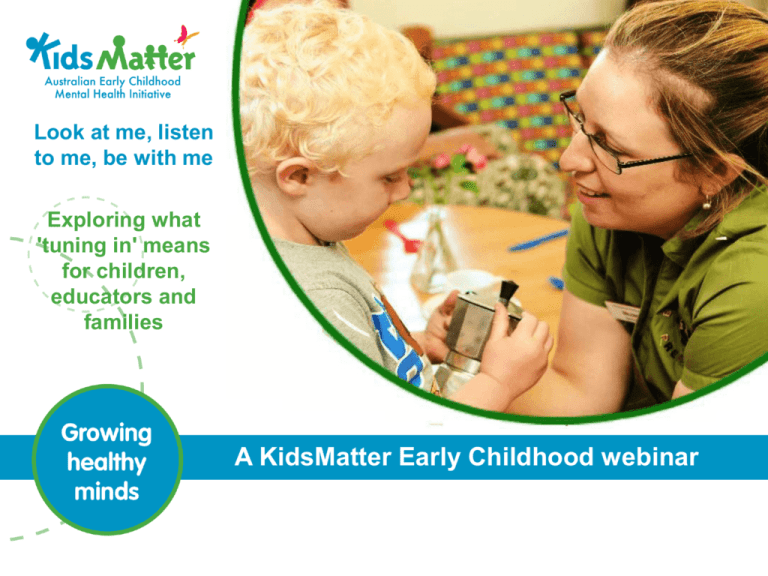
Look at me, listen to me, be with me Exploring what 'tuning in' means for children, educators and families A KidsMatter Early Childhood webinar In today’s webinar … Welcomes and introductions Relationships and learning Relationships, the EYLF and the NQS The research about the benefits of ‘tuning in’ Prioritising ‘tuning in’ through policy and practice Thanks and close Self Care: If you need support, remember you can contact Lifeline (https://m.lifeline.org.au/ ) SANE (http://www.sane.org/information/helpline) beyondblue (http://www.beyondblue.org.au/getsupport/get-immediate-support) The Australian Psychological Society (http://www.psychology.org.au/contact_us) https://www.kidsmatter.edu.au/early-childhood/taking-care-of-yourself Lets do a poll … your experience of webinars Relationships and learning Children’s learning happens in the context of relationships. It’s through ‘serve and return’ interactions, that the infant brain makes connections and grows. Without positive relationships the infant becomes stressed This effects the brain’s growth and ability to learn Relationships, the EYLF and NQS The EYLF Principles … Being, Belonging, Becoming Practice Relationships National Quality Standard Learning Outcomes Lets do a poll … your understanding of ‘tuning in’ Why research says ‘tuning in’ is important Babies and children need relationships to grow, thrive and flourish physically, emotionally, mentally and spiritually. The orphanage experience http://phenomena.nationalgeographic.com/2013/07/31/the-orphanage-problem/ Babies are biologically designed to connect Mother engaged with and responding to baby. Mother with ‘still face’, baby trying to engage mother by pointing at something. Baby now completely distressed, losses posture, cries and turns away. Tronick, E (1975) Still face experiment. Retrieved from http://www.youtube.com/watch?v=apzXGEbZht0 Lets do a poll … biggest tuning in challenges How might you find the time to ‘tune in’ Be in the moment … and stay there Program to be less busy Finding the time Connect while doing other tasks Develop strategies to ‘be available’ Lets do a poll … How many times did I tune in today? Making ‘tuning in’ a QIP priority Making written plan reflect real time and factor in ‘time to be’ Re-examining and reflecting about learning experiences Plan with set time frames Tuning In can be a QIP priority Re-examining and reflecting about routines Professional Conversations Individual responses to change A few final thoughts about … • Openness to change • Continuous learning • Reflective practice Enabling children to be their very best Resources and references Here is the link to a special Shared Thinking blog post written to provide details about where the information came from and ideas of where to find out more. https://www.kidsmatter.edu.au/early-childhood/blog/lookme-listen-me-be-me-after-webinar Continue the conversation KidsMatter Early Childhood @KidsMatterAus Shared Thinking www.kidsmatter.edu.au/earlychildhood/blog www.kidsmatter.edu.au kidsmatter@earlychildhood.org.au
